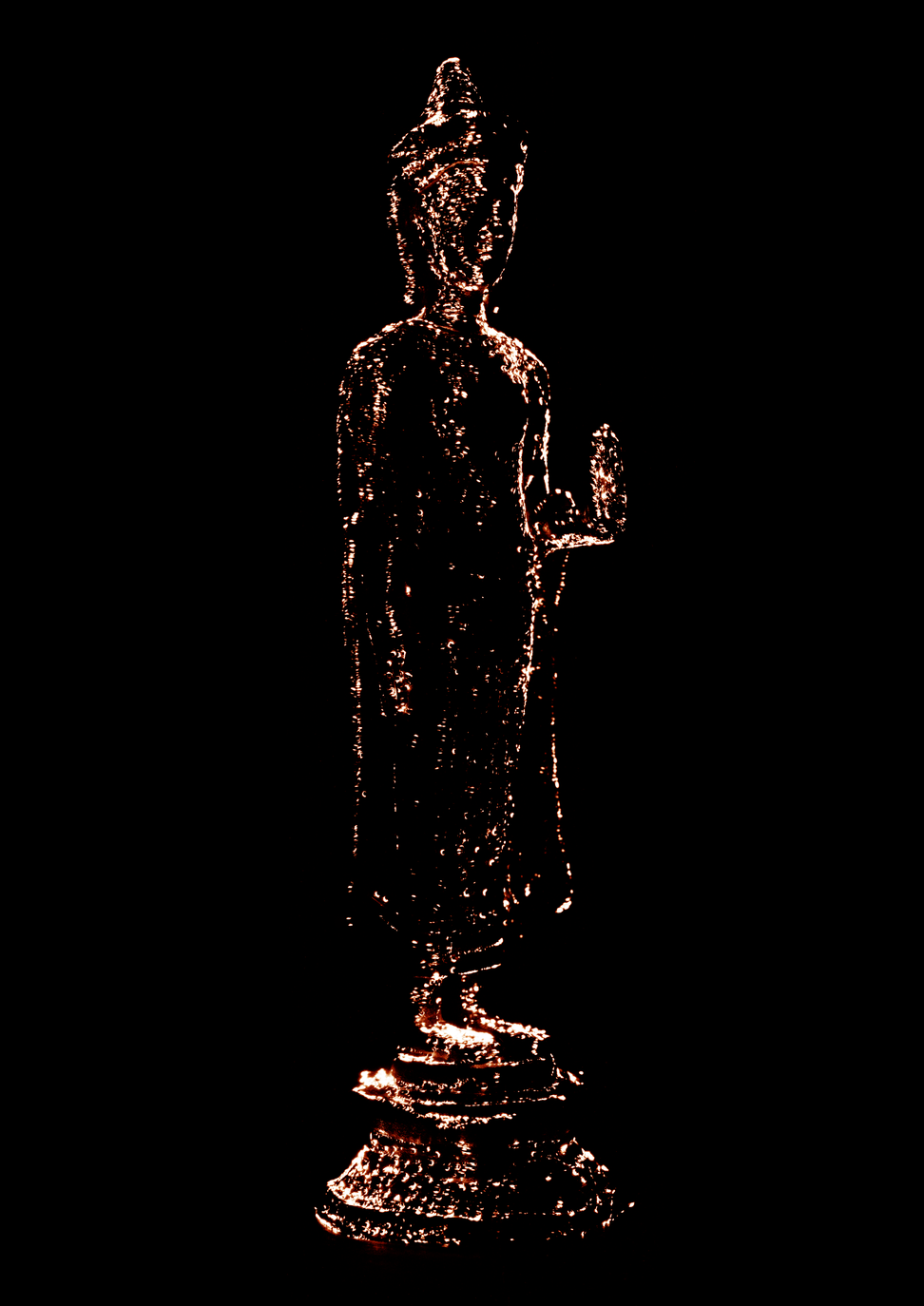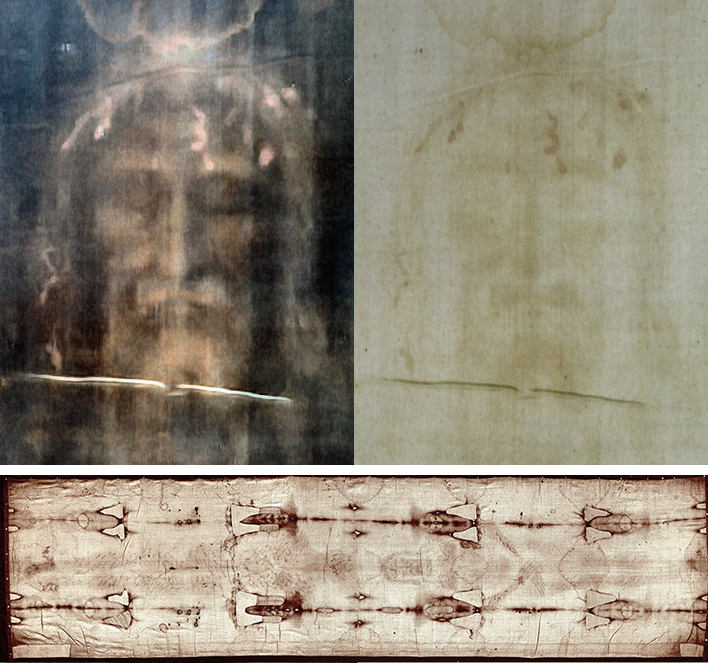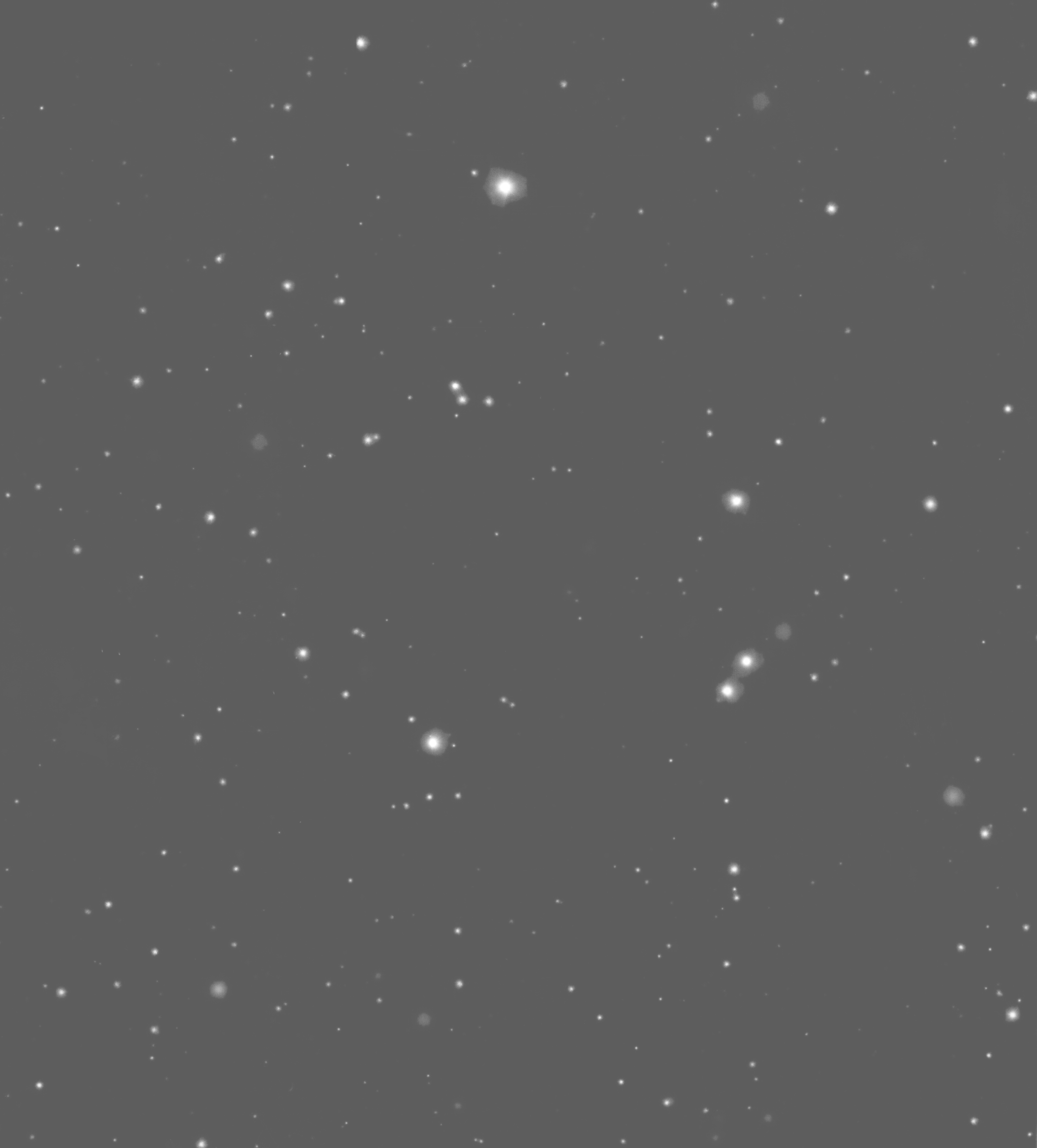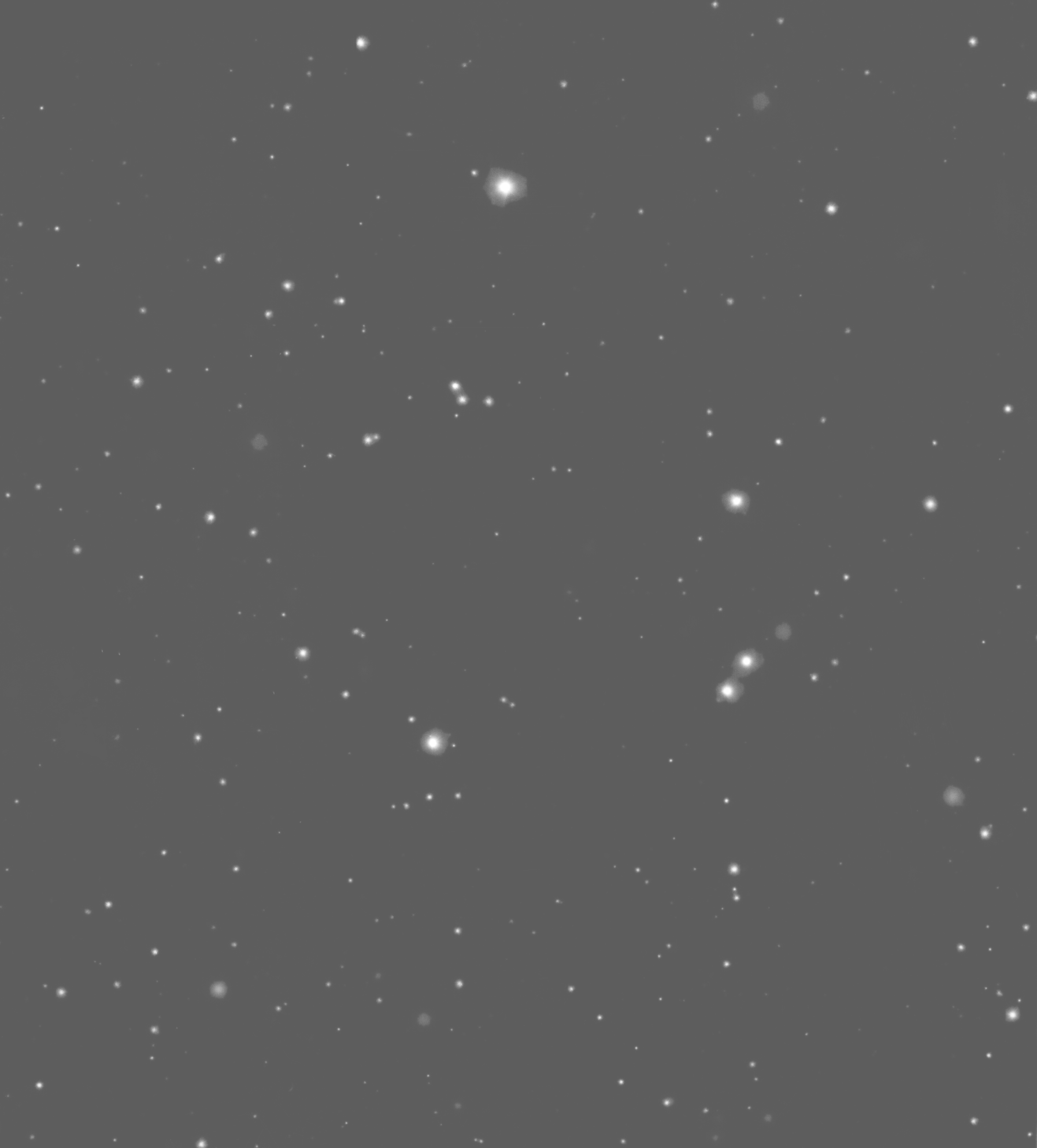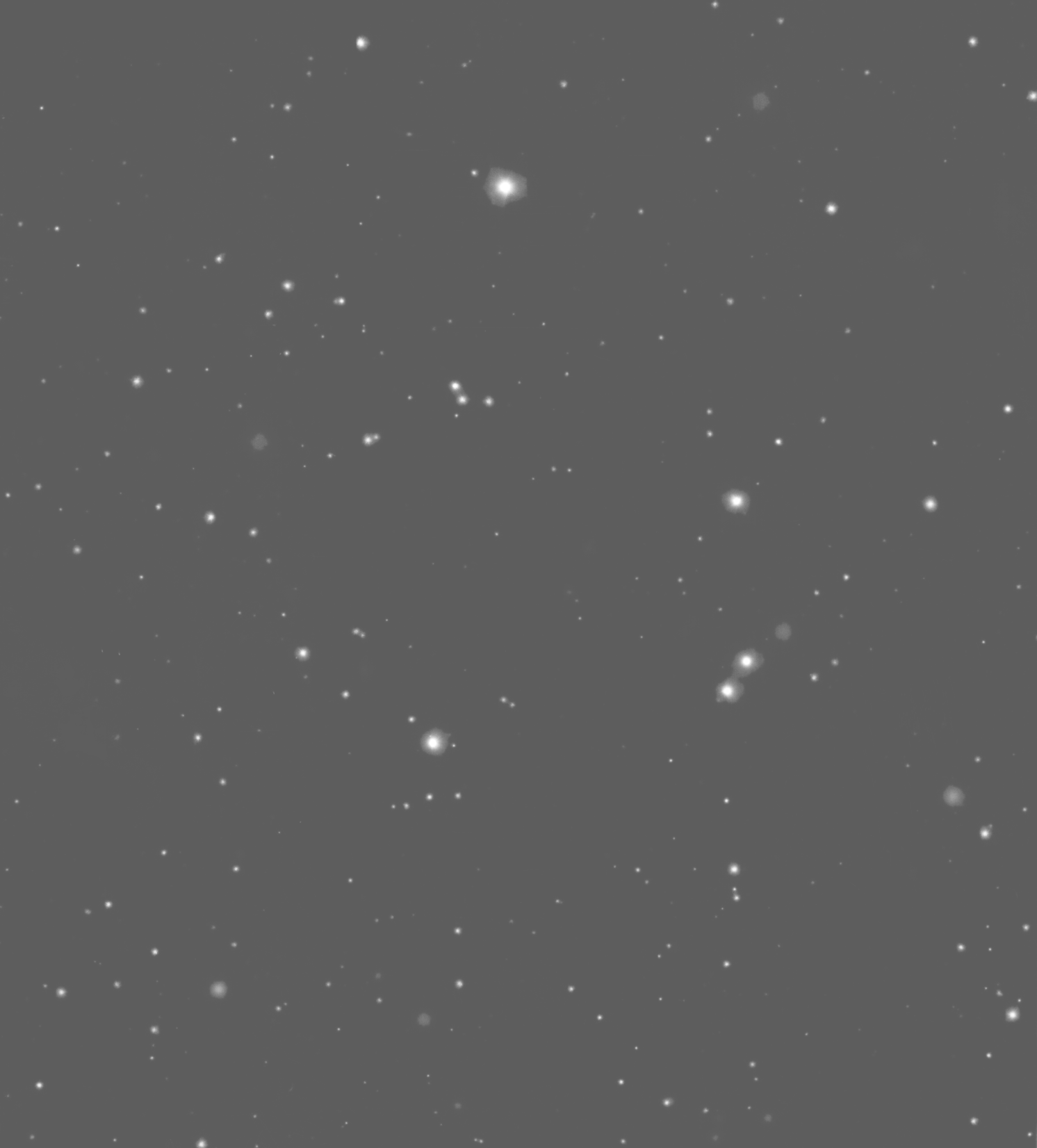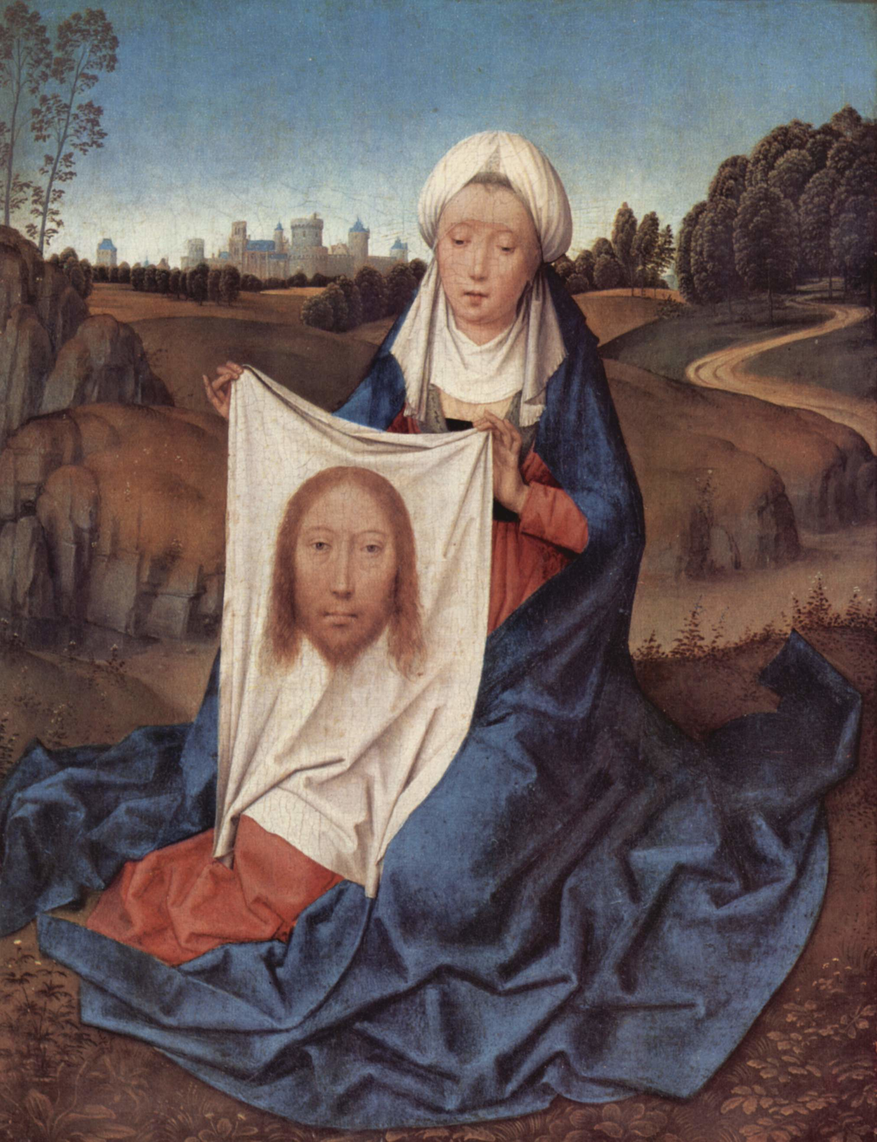2. The Acheiropoietic Image and Photography
The term 'acheiropoieton', a word of Byzantine etymology meaning 'made without hands', is traditionally used to describe miraculous appearances of a religious (Judeo-Christian) nature, such as the Veil of Veronica, the Abgar Mandylion or the Turin shroud [fig. 2, 3, 4]. All three fabrics are believed to have spontaneously received and preserved the imprint of Christ's likeness, through their direct physical contact with his body. Every religious acheiropoieton seems to have come about without any intermediary. Moreover, the assumption that no human was involved in its creation is a prerequisite for the icon's claim to offer truth. The more the human hand is present, the more the supernatural aura of the image is undermined. In this regard, Bruno Latour writes that the trick to uncovering the trick always involves unmasking the human origin of the work, the manipulator behind the scenes who is caught in the act (Latour, 2002). By proving something is man-made, the transcendence of the divinities is nullified, the claims of salvation from above are emptied, Latour concludes.
Several art historians as well as sindonologists have turned to photography and its vocabulary to explain the apparition of religious icons. The Holy Veil has been interpreted in terms of 'a photographic facsimile' of Christ's features (Walsham, Relics, 90), which proves to be even 'more authentic than a work of art, in that it does not rely on artistic imitation. It is authentic as a photograph.' (Belting, Likeness, 221) The alleged imprint of Christ's body on the Turin shroud only became sufficiently visible and recognizable when it was photographed and revealed upon Secondo Pia's light-sensitive plate in 1898, thus authenticating the figure as a genuine trace of the divine, a mimetic witness. Theories have also been advanced which claim that the traces of Jesus's body on the Turin cloth came about as the result of a natural atomic flash, a 'photofulgural phenomenon of radiation'1 that permanently fixed a shadow portrait of the divine figure. Both the natural and technical processes of photography have been put into the service of the spiritual, with the aim of authenticating, explaining or promoting the validity and truthfulness of the acheiropoieton, by an often contradictory rhetorical and scientific rationale. Through the connection of the visible manifestation with an imperceptible and deeper truth, the photograph turned into an imaginary site of revelation in which the spiritual realm of the unseen could be exposed in a strangely objective and magical way simultaneously. The acheiropoieton is legitimised by means of its photographic credibility. It became widely accepted that the science and technology behind the image, combined with a touch of light's wonder, can make the truth visible: hence, seeing is believing. This endows the image not only with the power of proof and persuasion but also with the allures of illusion, deceit, and falsehood.
In turn, photography itself has been strongly identified with acheiropoietic image-making ever since its inception. Early experimenters already took notice of the self-generating and automated principles involved. In contrast to religious images, which were supposedly created by a miracle, the autonomy of photography was considered a predominantly natural phenomenon, although associations with supernatural and lifelike properties were always nearby, largely fed by the illusion of its spontaneous origin. Already in 1839, William Henry Fox Talbot stated that it is not the artist who makes the picture, but the picture which makes itself: 'A person unacquainted with the process, if told that nothing of all this was executed by the hand, must imagine that one has at one's call the genius of Aladdin's lamp. [...] It is a little bit of magic realized – of natural magic. You make the powers of nature work for you.'2
The first photo-flash technologies too were often compared to natural elements; either they were similar, or they were an improved artificial version of them. Bottled sunlight, borrowed daylight, night turned into day, the sun drawing its own picture – these were the common expressions used to describe and praise the near-magical novelties of this type of artificial illumination. By far the most suitable metaphor was found in natural lightning, a similarly shocking, dazzling, and unpredictable phenomenon that carves its way through the dark and reveals what is hiding in obscurity with a startling force. Aside from sharing obvious visual similarities, the photographic flash also took over lightning's metaphysical connections to the natural sublime: the camera's dazzling light became associated with a sense of awe and danger, of immediacy and unpredictability, of enchantment, beauty and cosmic energy, and of intense religious and intellectual revelation through which one could transcend oneself.
Come over me, proud light, wild light, burn deep.
- Laszlo Moholoy-Nagy, 1917
Lightning is an anarchist, it acknowledges no rules.
- Camille Flammarion, 1905
Everything That Shines Sees: Flash Light, Photography and the Acheiropoietic.
Dominique Somers
1. Introduction
Despite the confusion and danger that it holds in store for the viewer, the human fascination with the flash image is a persistent one. Is it a sort of entrancement, an evocation of a pure or even 'higher' energy that attracts us? Or is it the act of rebellion and dislocation that this caesura creates, overwhelming human perception, surrendering to a power that lies outside ourselves, that captivates us?
As a researcher affiliated with the Doctoral School of Arts in Ghent (Belgium), I am working on a practice-based PhD project entitled Everything That Shines Sees. Starting from a wider research into the extremes of the visible and visuality, I explore how the phenomenon of flash light and its radiation can be deployed, for a better understanding of the ways in which images manifest themselves and to what degree their formation and mediation can be approached from a phenomenological as well as an intellectual perspective. For it seems that flash light, as a sublime and immanent entity, never entirely reveals its true image. Might it even be a kind of otherworldly, artificial intelligence, which we can never understand completely? Can the experience and phenomenon of flash light be translated by any kind of aesthetic or visual 'print'?
My research project investigates, among other topics, whether the answer to these questions may lie in flash light's ability to materialize naturally and engender pictures that are not only made visible for, and by, the human. It involves a philosophical assessment of this phenomenon as an inherently photographic process, a form of direct writing by a burst of light, thus disconnecting flash photography from its commonly accepted conception as a human act of intentional looking, with the aid of an optical apparatus and an artificial source of illumination.
Using a number of my own works as starting points, this exposition addresses the creation and mediation of two specific forms of such self-generated or acheiropoietic imagery: the imprints made by lightning and other electric discharges, and the manifestation of cosmic rays. I discuss scientific tests I have performed in cooperation with a lightning simulation lab in Oxfordshire (UK) and with the nuclear research centre CERN in Geneva (Switzerland), as well as do-it-yourself experiments involving homemade spark generators. These are all specifically set up to investigate how the effects of flash light and its (radio)active properties relate to notions of materiality, visibility, representation, credibility and human agency, as well as to processes of mediation. Of what action and authority is the artificial flash image the effect? Can one argue that every work of art is in fact a fake acheiropoieton? That the act of making imagery to represent an idea or gesture short-circuits the very definition of acheiropoietic imagery? Is seeing truly believing? And what does seeing even mean with respect to the agency of the creative being interacting with an optical apparatus, when observation and visualisation are increasingly defined by a techno-logic? Shouldn't we adopt new perspectives with regard to the mediation and aesthetic involved in images by and of flash light, such as a perspective of transience, speculation, uncertainty, interactivity, and process?
These are some of the questions that are addressed in the context of the works discussed here. At the same time, I elaborate on the relation between the acheiropoietic and the photographic from a historical perspective to eventually touch upon its relevance to current discussions about automated images and the undeterred dominance of visuality as a powerful modality by which our lives and ways of thinking are increasingly organised.
But the more the initial awe and novelty of flash light techniques wore off, the less they were equated with natural phenomena, even to such an extent that the two were seen as opposed to one another. The same thing happened to photography in general: while the medium's intrinsic acheiropoietic aspects – such as the (partial) autonomy of the recording apparatus, the technical agency involved in making a photograph, the chemical qualities of light-sensitive material, the fact that something of the unforeseen always remains present in the photograph – were still acknowledged in a positive way in the early days, over time, these aspects were increasingly discarded or discussed, as a rule, in a negative manner in the official historiography of photography. Acheiropoietic effects turned more and more into the proverbial 'flies in the ointment' because they fundamentally undermined the idea of photography as a human-centred activity, relying on authorship, control and intentionality, three principles that have defined the medium as an art form ever since its inception. In this regard, Peter Geimer remarks that speaking of the self-generated image mainly became a discourse focusing on what it is not, underlining the lack of an author, of intent and of a clear origin, thus marking first and foremost an absence or void (Geimer, 2011).
The key issues that are at stake here, and therefore underpin my artistic research, concern the definition and status of both the natural and artificial image, and their epistemological and ontological connections. The assumption, that there exists a direct and spontaneous line between the photograph and the invisible substance under study, can only hold true if all the intermediary steps and material processes, which make the production of the image possible in the first place, are either omitted or taken for granted as being merely technical matters. I, however, argue that everything happens in the middle, in that space where human and nonhuman agencies, nature and culture, meet and interact. The technical arrangement of flash light and the optical apparatus that goes with it are not merely a means of obtaining some independently given entity but an essential part of the construction of the artificial reality. Phenomena are thoroughly constituted by their workings, and their distinctly socio-cultural and aesthetic components. But the illusory objectivity of this technical visibility keeps presenting the theory of perception with the same age-old dilemmas regarding representation and indexicality. It is this paradox, which keeps complicating a media-philosophical approach of technical images and still colours cultural (mis)perceptions about authenticity, authorship, creativity and visuality, that informs the works under discussion here.
